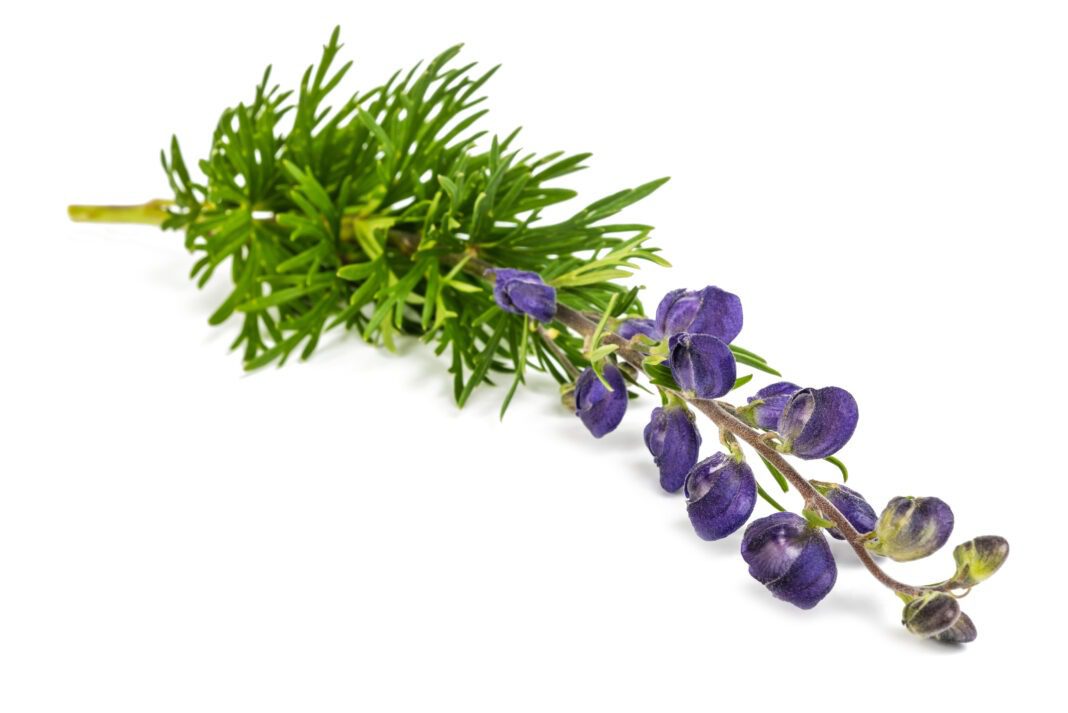Introduction
Aconitium napellus perineal herb having blue or white flowers belongs to the family Ranunculaceae. It is found in various parts of the world, including Europe, Asia, and North America. Aconite has been historically used in traditional medicine, but its toxic properties have limited its contemporary medical use.The flowers are bilaterally symmetrical (That is the flowers can be divided into two equal halves)having a prominent upper hood. This is one of the main characters of this plant. The leaves are palmate (shaped like an open palm) with tuberous roots (1). The plant is highly toxic in nature mainly the roots and tubers. Aconite (Aconitium napellus): toxicity and its effect on the body are as below.
Common names
Aconite, Monkshood, wolfsbane
Botanical description
The plant is about 3 – 4 feet tall. Leaves are divided into five lobes and are palmately arranged. The plant is perineal in nature and died with the onset of summer.
Traditional uses of Aconitium napellus
The plant is traditionally used for many medicinal purposes like it has been used as an arrow poison for hunting. In Chinese tradition, it is used for the prevention of colds, general weakness, and several antidotes for various poisons. Also used for the management of facial paralysis, joint pain, inflammation, gout, pyrexia, sciatica, and rheumatism (2).
Compounds present in Aconitium napellus
Aconitine
This is a type of alkaloid present in the plant also known as monkshood or wolfsbane. It is neurotoxic in nature and is highly toxic to humans and other animals. It binds to the sodium channels and causes the numbness in mouth, pain, nausea, and changes in visual perception. The plant is highly toxic as simply picking the leaves can result in intoxication (3).
Alkaloids in Aconite
Aconitium napellus plant contains various types of alkaloids like aconitine, mesaconitine, and hypaconitine. All these alkaloids are very potent neurotoxins and affect the nervous system. Among these aconitne is considered as most toxic alkaloid which is present in the plant. Even a small dose can have severe effects on the human body.
Traditional Uses of Aconite
- Despite its toxicity, aconite has been used in traditional medicine for various purposes.
- In traditional Chinese medicine (TCM), aconite is known as “Fuzi” and has been used for its analgesic and anti-inflammatory properties, especially for managing pain and treating conditions like arthritis and rheumatism.
- However, due to its high toxicity, the use of aconite in herbal medicine is highly regulated and requires precise preparation and dosage.
Aconitium napellus toxicity due to Aconitine
Aconitine and related alkaloids found in the Aconitum species are highly toxic cardiotoxins and neurotoxins. The wild plant (especially the roots and root tubers) is extremely toxic. Severe aconite poisoning can occur after accidental ingestion of the wild plant or consumption of an herbal decoction made from aconite roots (4).
1. Cardiotoxin due to aconitine in the plant
Aconitine toxicity results in irregular heartbeat, cardiac fibrillation, and ventricular tachycardia.
2. The toxic effect on the nervous system
Aconitine blocks neuromuscular transmission. Thus, affects the nervous system of the body.
3. Effect of embryo growth
The alkaloids also possess a harmful effect on the growth and morphogenesis of the developing embryos. It also defects the organ formation and brain development of the growing embryos (5).
Regulations
In modern times, the use of aconite is strictly regulated and controlled. Its use is generally discouraged in contemporary medical practice due to the risks associated with its toxicity. Herbalists and practitioners of traditional medicine are cautious about using aconite and stress the importance of proper processing and dosing to minimize risks.
Summary
- Aconite is a plant containing alkaloids that are highly toxic to humans.
- While it has historical and traditional use in certain systems of medicine, its toxicity has led to caution and restrictions regarding its use.
- It is vital for individuals to be aware of the potential dangers associated with aconite and to avoid using it without proper guidance and supervision from trained professionals.
